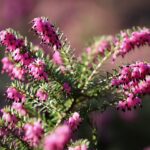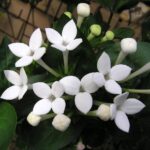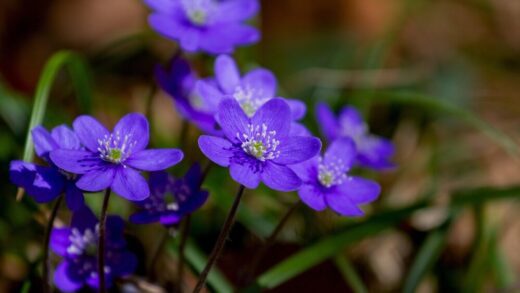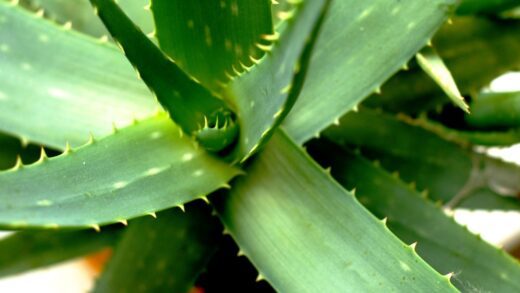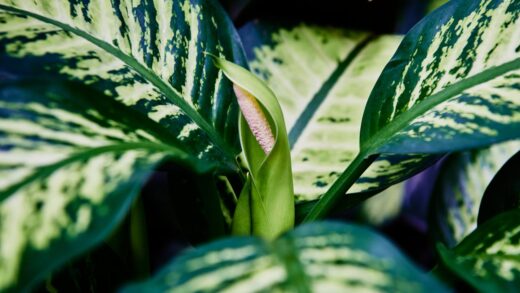Alpine heath is a plant that has adapted to thrive in nutrient-poor environments, a characteristic that defines its feeding requirements in the garden. Its native habitat of rocky, alpine slopes is not rich in fertile soil, and as a result, Erica carnea has evolved to be highly efficient at sourcing the nutrients it needs. This means that in most average garden soils, it requires very little, if any, supplemental fertilization. Over-feeding is a far more common and damaging problem than under-feeding for this species. An excess of nutrients, particularly nitrogen, can lead to lush, soft growth that is more susceptible to disease and frost damage, and can come at the expense of its famously prolific flowering. A minimalist approach to fertilization is therefore key to maintaining a healthy, hardy, and floriferous plant.
The foundation of good nutrition for alpine heath lies not in bags of fertilizer, but in the health and composition of the soil itself. A soil that is rich in organic matter will provide a slow and steady release of all the essential nutrients the plant needs throughout the year. Incorporating well-rotted compost or leaf mold into the soil at the time of planting is the single most important step you can take to ensure your heath has access to a balanced diet. This initial soil preparation often provides enough fertility to sustain the plant for several years without the need for additional feeding.
For plants grown in the ground, an annual top-dressing with a thin layer of organic material is generally the only “fertilization” required. Applying about an inch of compost, composted bark, or leaf mold around the base of the plant in the spring serves multiple purposes. It slowly replenishes the nutrients in the soil, improves soil structure, helps to conserve moisture, and suppresses weeds. This gentle, natural method of feeding mimics the way nutrients are recycled in the plant’s native ecosystem and is perfectly suited to its modest requirements.
There are specific situations where a more targeted application of fertilizer might be considered, although these are the exception rather than the rule. Plants grown in containers, for instance, are in a closed system where nutrients are gradually leached out through watering and will eventually become depleted. Similarly, plants grown in very poor, sandy soils that are naturally low in fertility may show signs of nutrient deficiency over time. In these cases, a cautious and considered approach to fertilization can be beneficial, but it must be done with an understanding of the plant’s sensitive needs.
The unique nutrient profile of alpine heath
The nutritional needs of alpine heath are modest and reflect its adaptation to the lean soils of its mountainous origins. It does not have a high demand for the major macronutrients—nitrogen (N), phosphorus (P), and potassium (K)—that fuel the lush growth of many other garden plants. In fact, an overabundance of these nutrients can be detrimental. High levels of nitrogen, in particular, can stimulate excessive, soft foliar growth that is weak, prone to flopping, and less resilient to both winter cold and summer drought. This lush growth often comes at the direct expense of flower production, which is the primary reason for growing the plant.
Phosphorus is important for root development and flowering, while potassium contributes to overall plant hardiness and disease resistance. In most garden soils that have a reasonable amount of organic matter, these nutrients are typically present in sufficient quantities to meet the needs of Erica carnea. The plant’s efficient root system, often in partnership with beneficial mycorrhizal fungi, is adept at extracting these essential elements even from soils that might be considered poor for other plants. This is why a focus on creating a healthy, living soil is more important than applying chemical feeds.
While Erica carnea is notably tolerant of a higher pH than its ericaceous cousins, it can still suffer from issues related to nutrient availability in highly alkaline soils. In soils with a very high pH (above 8.0), essential micronutrients like iron can become “locked up” and unavailable for the plant to absorb, even if they are present in the soil. This can lead to a condition called iron chlorosis, where the new foliage appears yellow with green veins. This is one of the few instances where a specific nutritional intervention, such as the application of chelated iron, might be necessary.
Understanding this preference for a “lean” diet is crucial for long-term success. The gardener’s goal should be to maintain a soil environment that is healthy and biologically active, but not overly rich. Avoid planting alpine heath in heavily manured beds or areas that receive regular applications of general-purpose, high-nitrogen lawn fertilizers. The runoff from such areas can be enough to negatively impact the health of the plant. Embracing its frugal nature is the key to achieving a plant that is compact, tough, and covered in blooms.
Choosing the right type of fertilizer
When fertilization is deemed necessary, such as for container-grown plants or those in exceptionally poor soil, the choice of fertilizer is critical. The best options are those that are gentle, slow-releasing, and balanced, without an excess of nitrogen. Steer clear of highly soluble, fast-acting chemical fertilizers, as these can easily burn the sensitive roots of the heath and will promote the kind of weak, sappy growth that should be avoided. A fertilizer designed for ericaceous (acid-loving) plants is often a good choice, even though Erica carnea is lime-tolerant, as these formulas typically have a lower nitrogen content and provide nutrients in a form that is readily available to ericaceous species.
Organic fertilizers are generally a much safer and more beneficial option for alpine heath. Products such as bone meal, which is a good source of phosphorus for root and flower development, or a balanced, slow-release granular organic feed can be used sparingly. These materials break down slowly over time, providing a gentle and sustained release of nutrients that the plant can use as needed. They also contribute to the overall health of the soil by feeding the microbial life within it, which is a key advantage over synthetic chemical feeds.
For plants showing signs of iron chlorosis (yellowing leaves) due to high soil pH, a specific treatment is required. A general-purpose fertilizer will not solve this problem, as the issue is not a lack of iron in the soil, but the plant’s inability to absorb it. In this case, a product containing chelated iron is the most effective solution. This can be applied as a liquid drench to the soil or as a foliar spray directly onto the leaves for a faster, albeit more temporary, effect. This is a corrective measure for a specific problem, not a part of a routine feeding schedule.
In most garden situations, the best “fertilizer” is not a product from a bag or bottle, but a top-dressing of well-rotted organic matter. Materials like garden compost, leaf mold, or composted pine bark provide a very mild and slow release of a wide spectrum of nutrients and micronutrients. More importantly, they improve the soil’s structure, water-holding capacity, and overall biological health. This holistic approach to soil fertility is perfectly aligned with the needs of the alpine heath and is the most sustainable way to ensure its long-term health.
The timing and application of fertilizers
If you determine that your alpine heath requires feeding, the timing of the application is just as important as the choice of fertilizer. The best time to apply any fertilizer or organic top-dressing is in the late winter or very early spring, just as the plant is beginning to show signs of new growth. Applying nutrients at this time ensures they are available to the plant as it enters its most active period of growth following the end of its flowering season. This timing supports the development of healthy new foliage which, in turn, will support the formation of flower buds for the following winter.
Avoid fertilizing in late summer or autumn. Applying nutrients, especially those containing nitrogen, late in the season can stimulate a flush of new, tender growth. This new growth will not have sufficient time to harden off before the first frosts arrive and is therefore highly susceptible to being damaged or killed by the cold. This not only wastes the plant’s energy but can also create entry points for diseases. The plant should be encouraged to slow down its growth and prepare for dormancy as winter approaches.
When applying a granular slow-release fertilizer or an organic material like bone meal, do so sparingly. Follow the manufacturer’s instructions, and when in doubt, use less than the recommended amount. Sprinkle the granules evenly on the soil surface around the plant, extending out to the drip line (the edge of the plant’s canopy). Avoid concentrating the fertilizer at the base of the stem. Gently rake the granules into the top layer of soil and water the area well afterwards to help activate the fertilizer and start the process of nutrient release.
For container-grown plants, a liquid feed may be more appropriate. Use a diluted, balanced liquid fertilizer, or one specifically formulated for ericaceous plants, and apply it once or twice during the spring and early summer growing season. Do not exceed the recommended dilution rate, as a concentrated solution can scorch the roots. Apply the liquid feed to moist soil, never to a dry root ball, to ensure it is absorbed properly and to minimize the risk of root burn. Stop all feeding by mid-summer to allow the plant to prepare for the coming winter.
The importance of soil organic matter
While specific fertilizers have their place, the single most important component for the long-term nutrition and health of alpine heath is the presence of abundant organic matter in the soil. Organic matter, in the form of compost, leaf mold, and other decomposed plant and animal materials, is the cornerstone of a fertile and healthy soil ecosystem. It acts as a slow-release reservoir of essential plant nutrients, breaking down over time to provide a steady and balanced supply that perfectly matches the modest needs of Erica carnea. This eliminates the “boom and bust” cycle that can be created by synthetic fertilizers.
Beyond its nutritional value, organic matter fundamentally improves the physical structure of the soil. In sandy soils, it helps to bind the loose particles together, significantly increasing the soil’s ability to retain both water and nutrients that would otherwise leach away. In heavy clay soils, it works to separate the fine, sticky particles, creating larger aggregates and improving drainage and aeration. This structural improvement is critical for alpine heath, as it directly addresses its need for a well-drained yet moisture-retentive root environment.
A soil rich in organic matter is also teeming with beneficial life, including earthworms, bacteria, and fungi. This complex soil food web is vital for nutrient cycling. Microorganisms break down organic materials, converting nutrients into forms that plant roots can absorb. Some fungi, known as mycorrhizae, form a symbiotic relationship with the roots of heaths, extending their reach into the soil and greatly enhancing their ability to absorb water and essential nutrients like phosphorus. By adding organic matter, you are not just feeding the plant; you are feeding the entire ecosystem that supports it.
Maintaining a healthy level of organic matter is an ongoing process. The initial incorporation of compost at planting time provides a strong foundation, but this should be supplemented with regular top-dressings. An annual application of a 2-3 centimeter layer of compost or leaf mold around the plants each spring is an excellent practice. This mulch layer will gradually be incorporated into the soil by the action of worms and other soil life, continually replenishing the organic content, conserving moisture, suppressing weeds, and providing all the gentle nutrition your alpine heath will likely ever need.
Diagnosing and correcting nutrient deficiencies
Given its low nutrient requirements, true deficiencies are relatively rare in alpine heath, especially when grown in soil amended with organic matter. However, in certain conditions, such as very sandy soils or in old, depleted container compost, symptoms may appear. One of the most common issues is a general yellowing or paling of the foliage, known as chlorosis. If this affects the entire plant, both old and new leaves, it may indicate a nitrogen deficiency. This can often be corrected with a spring top-dressing of well-rotted compost or a very light application of a balanced, slow-release organic fertilizer.
A more specific type of chlorosis, where the new, young leaves turn yellow while the veins remain green, is a classic symptom of iron deficiency. This is typically not caused by a lack of iron in the soil, but by a high soil pH that makes the iron chemically unavailable to the plant. This is one of the few nutritional problems Erica carnea might face due to its ericaceous nature, despite its tolerance for some alkalinity. The most effective treatment is to apply chelated iron, which is in a form the plant can readily absorb even in alkaline conditions. This can be watered into the soil or used as a foliar spray for a quicker response.
Other deficiencies are much less common. A phosphorus deficiency might manifest as stunted growth and a purplish tinge to the foliage, while a potassium deficiency can cause browning or scorching along the leaf margins. However, these symptoms can also be caused by other environmental stresses, such as drought, waterlogging, or cold damage. It is therefore essential to consider all other aspects of the plant’s care and environment before concluding that a nutrient deficiency is the root cause of the problem.
Before reaching for a fertilizer to correct a perceived deficiency, always double-check the basics first. Is the soil drainage adequate? Has the plant been watered correctly? Is the soil pH within the acceptable range? In most cases, issues with alpine heath are related to these fundamental cultural requirements rather than a lack of fertility. If all other conditions are optimal and the symptoms persist, then a gentle, targeted application of the appropriate nutrient, preferably from an organic source, can be used to nurse the plant back to full health.

